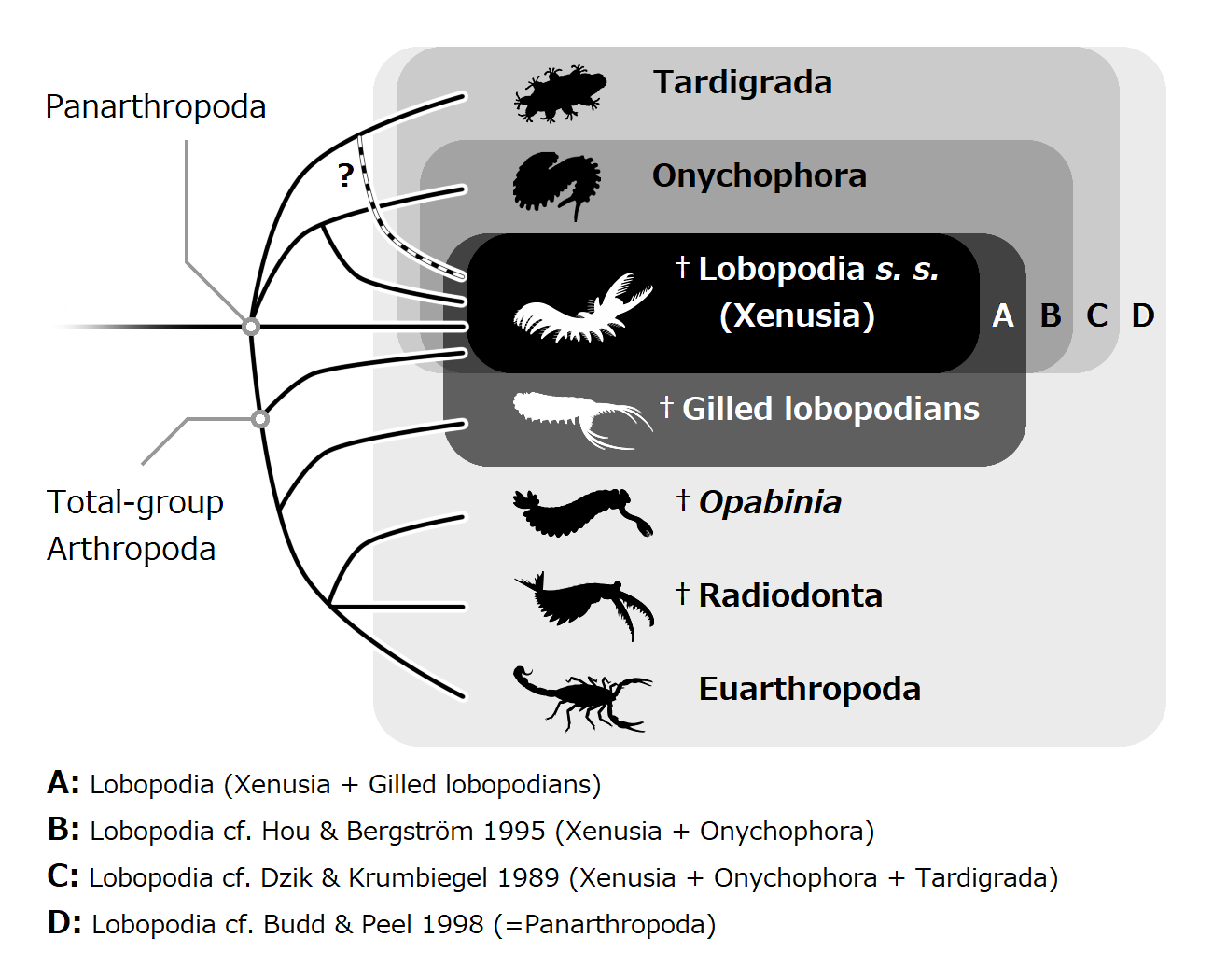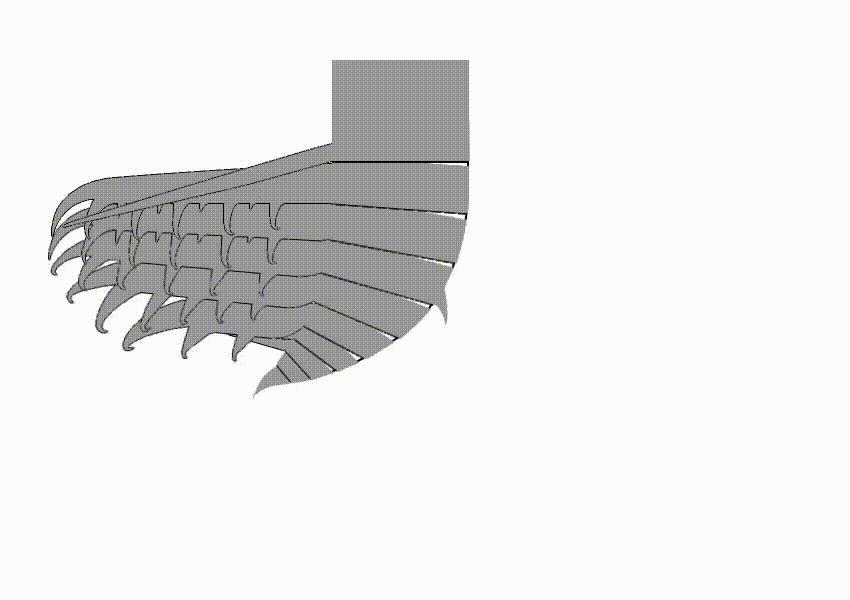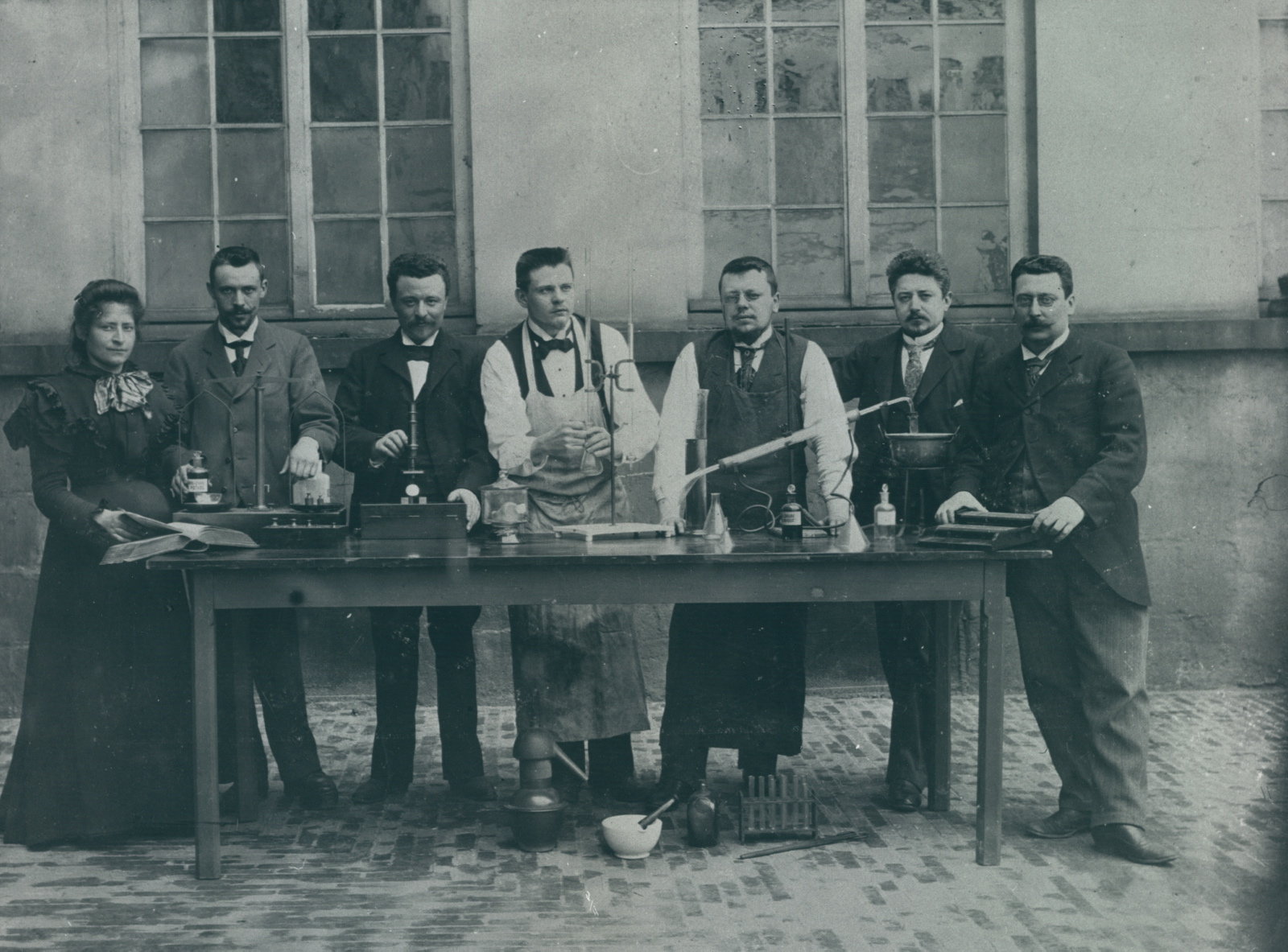|
Aegirocassis
''Aegirocassis'' is an extinct genus of radiodont arthropod belonging to the family Hurdiidae that lived 480 million years ago during the early Ordovician. It is known by a single species, ''Aegirocassis benmoulai''. Van Roy initiated scientific study of the fossil, the earliest known of a "giant" filter-feeder discovered to date. ''Aegirocassis'' is considered to have evolved from early predatory radiodonts. Description File:20210221 Aegirocassis size.png, Size estimation File:YPM 527123 Aegirocassis benmoulai frontal appendage.png, Fossil of frontal appendage File:20191229 Radiodonta frontal appendage Aegirocassis benmoulai Aegirocassis benmoulae.png, Reconstruction of frontal appendage ''A. benmoulai'' was the largest known radiodont and largest animal existed in this period, and the length was described as exceeding in the scientific journal ''Nature''. The fossil was preserved with exceptional three-dimensional detail, unlike most other radiodont fossils, in which the ... [...More Info...] [...Related Items...] OR: [Wikipedia] [Google] [Baidu] |
Radiodont
Radiodonta is an extinct Order (biology), order of stem-group arthropods that was successful worldwide during the Cambrian period. They may be referred to as radiodonts, radiodontans, radiodontids, anomalocarids, or anomalocaridids, although the last two originally refer to the family Anomalocarididae, which previously included all species of this order but is now restricted to only a few species. Radiodonts are distinguished by their distinctive frontal appendages, which are morphologically diverse and used for a variety of functions. Radiodonts included the earliest large predators known, but they also included sediment sifters and filter feeders. Some of the most famous species of radiodonts are the Cambrian taxa ''Anomalocaris, Anomalocaris canadensis'', ''Hurdia, Hurdia victoria'', ''Peytoia nathorsti'', ''Titanokorys gainesii, Titanokorys gainessii, Cambroraster, Cambroraster falcatus'' and ''Amplectobelua, Amplectobelua symbrachiata'', the Ordovician ''Aegirocassis, Aegiroca ... [...More Info...] [...Related Items...] OR: [Wikipedia] [Google] [Baidu] |
Hurdiidae
Hurdiidae is an extinct cosmopolitan distribution, cosmopolitan Family (biology), family of radiodonts, a group of Crown group#Stem groups, stem-group arthropods, which lived during the Paleozoic Era. It is the most long-lived radiodont clade, lasting from the Cambrian period to the Devonian period. Description Hurdiidae is characterized by Radiodonta#Frontal appendage, frontal appendages with distal region composed of 5 subequal blade-like endites, alongside the enlarged head carapaces and tetraradial mouthpart (Radiodonta#Oral cone, oral cone). The Radiodonta#Frontal appendage, frontal appendages of hurdiids have a distinctive morphology, with the appendage of most species bearing five equally-sized elongate blade-like ventral spines known as endites. Subsequent podomeres were reduced in size and with only small endites or none. Each podomere bore only a single endite, unlike other radiodonts, in which the endites were paired. In most species, the endites were curved med ... [...More Info...] [...Related Items...] OR: [Wikipedia] [Google] [Baidu] |
Lobopodian
The lobopodians, members of the informal group Lobopodia (from the Greek language, Greek, meaning "blunt feet"), or the formally erected phylum Lobopoda Cavalier-Smith (1998), are panarthropods with stubby legs called lobopods, a term which may also be used as a common name of this group as well. While the definition of lobopodians may differ between literatures, it usually refers to a group of soft-bodied, worm-like fossil panarthropods such as ''Aysheaia'' and ''Hallucigenia''. The oldest near-complete fossil lobopodians date to the Lower Cambrian; some are also known from Ordovician, Silurian and Carboniferous Lagerstätten. Some bear toughened claws, plates or spines, which are commonly preserved as small carbonaceous fossil, carbonaceous or Small Shelly Fossils, mineralized microfossils in Cambrian strata. The grouping is considered to be paraphyletic, as the three living panarthropod groups (Arthropoda, Tardigrada and Onychophora) are thought to have evolved from lobopodian ... [...More Info...] [...Related Items...] OR: [Wikipedia] [Google] [Baidu] |
Lobopodia
The lobopodians, members of the informal group Lobopodia (from the Greek language, Greek, meaning "blunt feet"), or the formally erected phylum Lobopoda Cavalier-Smith (1998), are panarthropods with stubby legs called lobopods, a term which may also be used as a common name of this group as well. While the definition of lobopodians may differ between literatures, it usually refers to a group of soft-bodied, worm-like fossil panarthropods such as ''Aysheaia'' and ''Hallucigenia''. The oldest near-complete fossil lobopodians date to the Lower Cambrian; some are also known from Ordovician, Silurian and Carboniferous Lagerstätten. Some bear toughened claws, plates or spines, which are commonly preserved as small carbonaceous fossil, carbonaceous or Small Shelly Fossils, mineralized microfossils in Cambrian strata. The grouping is considered to be paraphyletic, as the three living panarthropod groups (Arthropoda, Tardigrada and Onychophora) are thought to have evolved from lobopodian ... [...More Info...] [...Related Items...] OR: [Wikipedia] [Google] [Baidu] |
Hurdia
''Hurdia'' is an extinct genus of hurdiid radiodont that lived 505 million years ago during the Cambrian Period. As a radiodont like ''Peytoia'' and ''Anomalocaris'', it is part of the ancestral lineage that led to euarthropods. Description ''Hurdia'' was one of the largest organisms in the Cambrian oceans, ''H. victoria'' reached approximately in length, while ''H. triangulata'' reached up to just . Its head bore a pair of rake-like frontal appendages which shovelled food into its pineapple-ring-like mouth (oral cone). Like other hurdiids, ''Hurdia'' bore a large frontal carapace protruding from its head composed of three sclerites: a central component known as the H-element and two lateral components known as P-elements. The function of this organ remains mysterious; it cannot have been protective as there was no underlying soft tissue. Originally, it is estimated that body flaps ran along the sides of the organisms, from which large gills were suspended. However, anatomy of ... [...More Info...] [...Related Items...] OR: [Wikipedia] [Google] [Baidu] |
Fossil Taxa Described In 2015
A fossil (from Classical Latin , ) is any preserved remains, impression, or trace of any once-living thing from a past geological age. Examples include bones, shells, exoskeletons, stone imprints of animals or microbes, objects preserved in amber, hair, petrified wood and DNA remnants. The totality of fossils is known as the ''fossil record''. Paleontology is the study of fossils: their age, method of formation, and evolutionary significance. Specimens are usually considered to be fossils if they are over 10,000 years old. The oldest fossils are around 3.48 billion years old to 4.1 billion years old. Early edition, published online before print. The observation in the 19th century that certain fossils were associated with certain rock strata led to the recognition of a geological timescale and the relative ages of different fossils. The development of radiometric dating techniques in the early 20th century allowed scientists to quantitatively measure the absolute ... [...More Info...] [...Related Items...] OR: [Wikipedia] [Google] [Baidu] |
Dinocarida
DinocarididaGreek, "Terrible crabs" – sometimes informally spelt Dinocarida, but the second 'id' is linguistically correct – see is a proposed fossil taxon of basal arthropods that flourished in the Cambrian period with occasional OrdovicianVan Roy, P.; Briggs, D. E. G. (2011). "A giant Ordovician anomalocaridid". Nature 473 (7348): 510–513. doi:10.1038/nature09920. edit and Devonian records. Characterized by a pair of frontal appendages and series of body flaps, the name of Dinocaridids comes from Greek, "deinos" and "caris" ("terrible crab"), referring to the suggested role of some of these members as the largest marine predators of their time. Dinocaridids are occasionally referred to as the 'AOPK group' by some literatures, as the group compose of Radiodonta (''Anomalocaris'' and relatives), Opabiniidae (''Opabinia'' and relatives), ''Pambdelurion'' and ''Kerygmachela.'' It is most likely paraphyletic, with ''Kerygmachela'' and ''Pambdelurion'' more basal than the clad ... [...More Info...] [...Related Items...] OR: [Wikipedia] [Google] [Baidu] |
Ordovician Arthropods
The Ordovician ( ) is a geologic period and system, the second of six periods of the Paleozoic Era. The Ordovician spans 41.6 million years from the end of the Cambrian Period million years ago (Mya) to the start of the Silurian Period Mya. The Ordovician, named after the Welsh tribe of the Ordovices, was defined by Charles Lapworth in 1879 to resolve a dispute between followers of Adam Sedgwick and Roderick Murchison, who were placing the same rock beds in North Wales in the Cambrian and Silurian systems, respectively. Lapworth recognized that the fossil fauna in the disputed strata were different from those of either the Cambrian or the Silurian systems, and placed them in a system of their own. The Ordovician received international approval in 1960 (forty years after Lapworth's death), when it was adopted as an official period of the Paleozoic Era by the International Geological Congress. Life continued to flourish during the Ordovician as it did in the earlier Cambrian Perio ... [...More Info...] [...Related Items...] OR: [Wikipedia] [Google] [Baidu] |
Ghent University
Ghent University ( nl, Universiteit Gent, abbreviated as UGent) is a public research university located in Ghent, Belgium. Established before the state of Belgium itself, the university was founded by the Dutch King William I in 1817, when the region was incorporated into the United Kingdom of the Netherlands after the fall of First French Empire. In that same year, he founded two other universities for the southern provinces as well, alongside Ghent University: University of Liège and State University of Leuven. After the Belgian revolution of 1830, the newly formed Belgian state began to administer Ghent University. In 1930, UGent became the first Dutch-speaking university in Belgium. Previously, French (and, even earlier, Latin) had been the standard academic language in what was ''Université de Gand''. In 1991, it was granted major autonomy and changed its name accordingly from ''State University of Ghent'' ( nl, Rijksuniversiteit Gent, abbreviated as ''RUG'') to its c ... [...More Info...] [...Related Items...] OR: [Wikipedia] [Google] [Baidu] |
Morocco
Morocco (),, ) officially the Kingdom of Morocco, is the westernmost country in the Maghreb region of North Africa. It overlooks the Mediterranean Sea to the north and the Atlantic Ocean to the west, and has land borders with Algeria to the east, and the disputed territory of Western Sahara to the south. Mauritania lies to the south of Western Sahara. Morocco also claims the Spanish exclaves of Ceuta, Melilla and Peñón de Vélez de la Gomera, and several small Spanish-controlled islands off its coast. It spans an area of or , with a population of roughly 37 million. Its official and predominant religion is Islam, and the official languages are Arabic and Berber; the Moroccan dialect of Arabic and French are also widely spoken. Moroccan identity and culture is a mix of Arab, Berber, and European cultures. Its capital is Rabat, while its largest city is Casablanca. In a region inhabited since the Paleolithic Era over 300,000 years ago, the first Moroccan s ... [...More Info...] [...Related Items...] OR: [Wikipedia] [Google] [Baidu] |
Tamisiocaris
''Tamisiocaris'' (from Latin ''tamisium'', sieve, and Greek ''karis'', crab, shrimp) is a radiodont genus initially only known from frontal appendages from the Buen Formation in Sirius Passet. Further specimens revealed that the frontal appendages were segmented and bore densely-packed auxiliary spines, which were adapted to suspension feeding in a manner analogous to modern baleen whales Baleen whales (systematic name Mysticeti), also known as whalebone whales, are a parvorder of carnivorous marine mammals of the infraorder Cetacea (whales, dolphins and porpoises) which use keratinaceous baleen plates (or "whalebone") in the .... See also * References {{Taxonbar, from=Q2391651 Anomalocaridids Prehistoric arthropod genera Cambrian arthropods Cambrian Greenland Fossils of Greenland Sirius Passet fossils Buen Formation Fossil taxa described in 2010 Cambrian genus extinctions ... [...More Info...] [...Related Items...] OR: [Wikipedia] [Google] [Baidu] |







